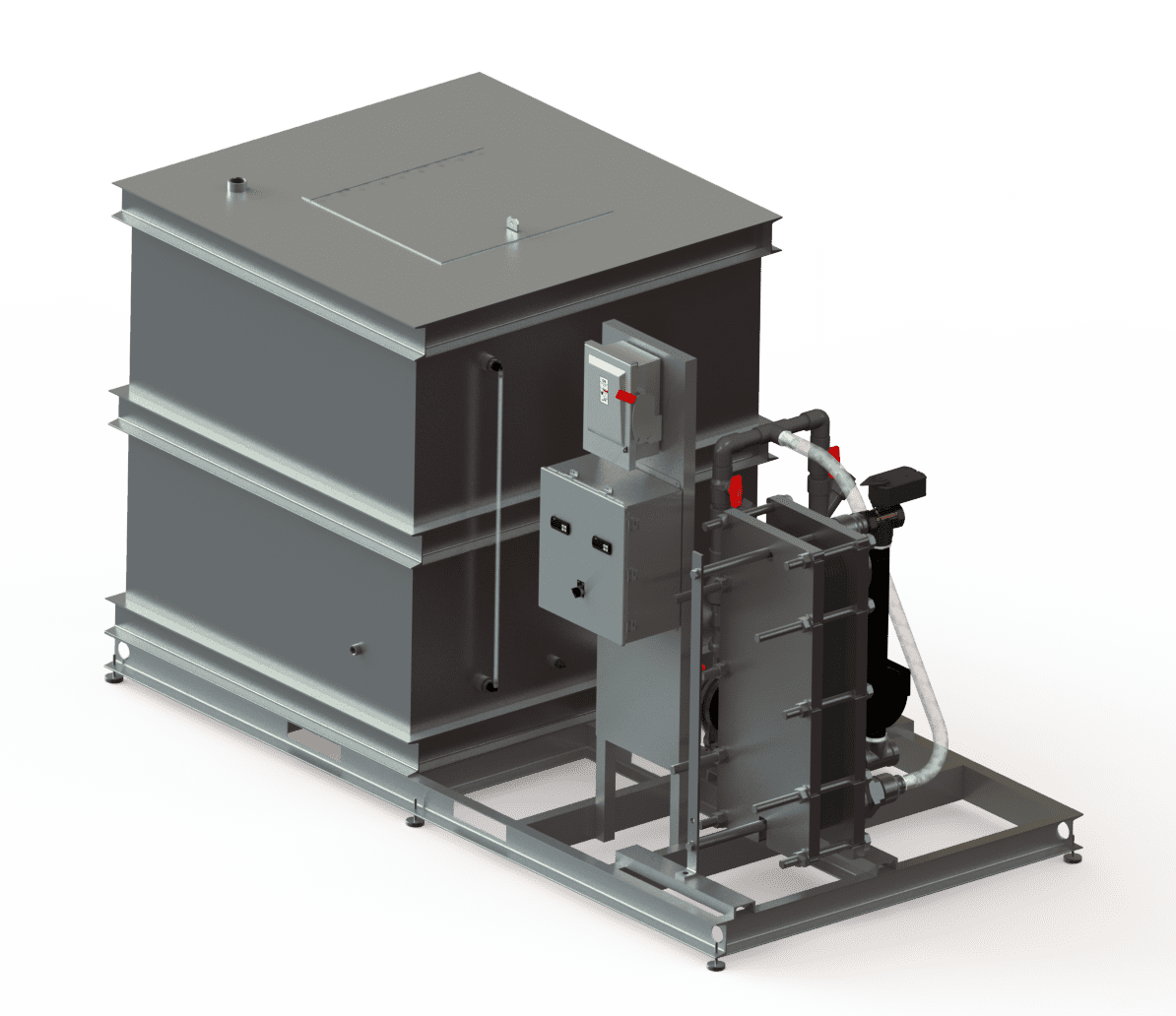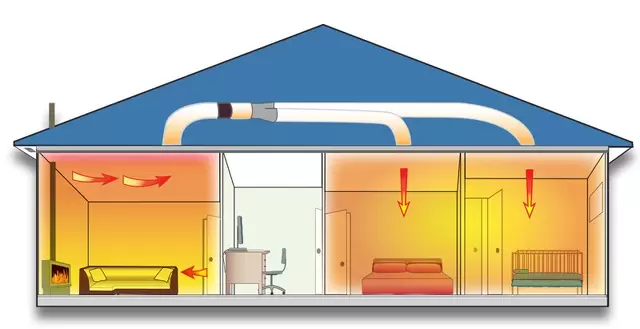Can DVS Heat Transfer Systems Designed for High-Performance Electronics Cooling?
The Function of Heat Transfer Solutions in Sustainable Power Solutions for the Future
Heat transfer systems are essential in the quest for sustainable power remedies. They enhance thermal energy administration, improving the performance of eco-friendly modern technologies. By employing devices like radiation, convection, and conduction, these systems lessen power losses. Their role in solar thermal and geothermal applications is specifically substantial. As advancements arise, the potential for additional innovations increases crucial inquiries about future power methods. What advancements will form the landscape of sustainable power?
Understanding Heat Transfer Equipments

The Importance of Thermal Power Administration
Reliable thermal energy administration is essential for maximizing power efficiency and decreasing waste in numerous systems. By controling temperature level and maximizing Heat transfer procedures, organizations can substantially minimize power intake and operational prices. Efficient administration entails the implementation of advanced innovations and techniques that keep track of and control thermal conditions within systems, making certain that energy resources are made use of successfully. Additionally, appropriate thermal power administration contributes to lowering greenhouse gas emissions, straightening with international sustainability objectives. It likewise improves system reliability and efficiency, leading to boosted product top quality and longer equipment life expectancy. Ultimately, focusing on thermal energy monitoring is a vital action towards producing extra sustainable energy options and fostering a responsible approach to power usage in domestic and commercial contexts.
Applications of Heat Transfer in Renewable Power
While different sustainable energy resources guarantee sustainability, the effective application of Heat transfer plays a necessary duty in their effectiveness. In wind energy systems, Heat transfer is utilized for wind turbine component cooling, boosting performance and long life. Geothermal power relies upon effective Heat exchange between the earth's subsurface and the fluid flowing in the system, optimizing energy removal. Biomass energy procedures also take advantage of Heat transfer, as it assists in converting organic products right into functional fuel through pyrolysis and gasification. Additionally, in hydropower, preserving excellent temperature levels in reservoirs can enhance energy output. Each of these applications demonstrates the vital significance of Heat transfer systems in enhancing renewable resource technologies, inevitably adding to an extra lasting power future.
Enhancing Solar Thermal Power Effectiveness
As solar thermal power systems continue to progress, improving their effectiveness has actually come to be vital for making the most of power outcome. Developments in Heat transfer technologies, such as improved thermal storage materials and innovative Heat exchangers, play a significant function in improving performance. By using innovative materials that have remarkable thermal conductivity, systems can move and catch Heat better. Additionally, integrating radar that adhere to the sunlight's course assurances that collection agencies obtain excellent solar exposure throughout the day. Using nanotechnology in solar absorbers can better raise energy absorption rates. Including automatic control systems assists regulate temperature levels and take care of power circulation efficiently, leading to minimized losses and improved overall system effectiveness. These enhancements lead the way for even more sustainable solar thermal energy options in the future.
Geothermal Home Heating: A Lasting Solution
Geothermal heating offers a viable alternative for sustainable energy, offering significant ecological benefits with lowered greenhouse gas emissions. Its efficiency and cost-effectiveness make it an eye-catching option to conventional furnace. However, obstacles related to application must be dealt with to optimize its potential effect.
Environmental Advantages of Geothermal
Typical heating techniques contribute significantly to greenhouse gas exhausts, geothermal home heating provides a compelling choice that minimizes environmental impact. By utilizing the Planet's inner Heat, geothermal systems make use of a sustainable power resource, significantly lowering reliance on fossil fuels. This method creates marginal carbon emissions, making it a cleaner alternative for residential and industrial heating. Additionally, geothermal systems promote power efficiency, as they require less energy contrasted to traditional furnace. DVS Heat Transfer Systems. The application of geothermal power also helps in minimizing air contamination, enhancing regional air high quality and public health. As a sustainable remedy, geothermal heating sustains climate adjustment reduction initiatives, placing itself as a vital part in the shift towards a greener future
Efficiency and Cost-Effectiveness
How does geothermal heating measure up in terms of performance and cost-effectiveness contrasted to conventional furnace? Geothermal heating demonstrates exceptional performance, often achieving a coefficient of efficiency (COP) of 3 to 5, indicating it creates three to five devices of Heat for each system of electricity eaten. This effectiveness equates right into reduced operating prices, especially in areas with steady geothermal resources. First installment expenses can be greater than standard systems; nevertheless, long-lasting cost savings on energy bills and reduced upkeep costs can balance out these in advance investments. In addition, numerous federal governments incentivize geothermal systems through rebates and tax credits, boosting their cost-effectiveness. Generally, geothermal heating becomes a financially feasible and lasting alternative to even more standard heating options.
Implementation Challenges and Solutions
Numerous difficulties can hamper the widespread execution of geothermal heater, despite their clear benefits as a lasting power option. High initial setup prices typically discourage investors and house owners, making financing a substantial obstacle. Additionally, the geographical limitations of ideal geothermal websites restrict access in certain areas. Local guidelines and permitting processes can additionally complicate project development, bring about delays. Public awareness and understanding of geothermal systems stay low, preventing approval. To resolve these challenges, targeted education and learning campaigns can boost open secret, while government motivations can ease financial burdens. Collaborating with local authorities to streamline laws may promote smoother task approvals, inevitably advertising the adoption of geothermal heating as a viable, lasting energy choice.
Technologies in Heat Transfer Technologies
Innovations in Heat transfer modern technologies play a vital function in enhancing energy performance and sustainability. Advanced Heat exchangers and stage adjustment products go to the center of these growths, supplying significant enhancements in thermal administration. These technologies not only optimize power usage yet additionally contribute to decreasing ecological impact in different applications.
Advanced Heat Exchangers
Advanced Heat exchangers play a vital role in improving power efficiency across various applications in lasting energy solutions. These tools promote the transfer of Heat between two or even more fluids, substantially minimizing power intake in processes such as commercial home heating, air conditioning, and power generation. Developments in materials and design, such as using nanofluids and small configurations, have caused enhanced thermal performance and reduced size demands. Furthermore, improvements in electronic tracking and control systems permit enhanced procedure, additional enhancing performance. By decreasing waste Heat and making the most of power healing, progressed Heat exchangers add to lower carbon footprints and sustain the change toward environmentally friendly technologies. Their proceeded advancement is crucial for attaining global power sustainability objectives.
Phase Modification Products
The integration of phase change materials (PCMs) right into Heat transfer innovations represents a substantial innovation in power monitoring and performance. PCMs absorb and release thermal energy throughout their stage modifications, allowing effective temperature law in building products and power systems. By storing excess Heat throughout top periods and releasing it when demand boosts, PCMs add to fill shifting and energy conservation - DVS Heat Transfer Systems. This capability enhances the performance of renewable resource systems, especially in solar thermal applications. Additionally, PCMs can improve the her comment is here thermal convenience of interior environments, reducing dependence on standard heating and cooling techniques. As developments in PCM formulations remain to emerge, their function in lasting power services is positioned to grow, offering appealing avenues for future research and application

Future Leads for Heat Transfer in Sustainable Energy
As the need for lasting energy options remains to rise, the role of Heat transfer systems is coming to be increasingly essential in forming future modern technologies. Developments in products and styles are anticipated to improve effectiveness in Heat transfer, decreasing energy losses in different applications. The integration of advanced thermal storage space systems, such as phase change products and thermochemical storage, will allow much better administration of energy sources. Research right into nanofluids and biomimetic Heat exchangers may even more optimize thermal efficiency. The adoption of smart innovations will certainly permit for real-time monitoring and adaptive control of Heat transfer processes. These innovations are positioned to considerably add to the total performance and sustainability of power systems, leading the way for a more energy-efficient future.
Frequently Asked Concerns
How Can Individuals Apply Heat Transfer Solution in the house?

People can carry out Heat transfer systems in the house by installing energy-efficient appliances, making use of radiant heat, and enhancing insulation. These actions boost energy efficiency, minimize costs, and promote sustainable methods in domestic environments.

What Are the Expenses Related To Setting Up Heat Transfer Equipments?
The expenses linked with setting up Heat transfer systems differ widely, typically incorporating tools, installment labor, and maintenance. Elements such as system type, home size, and regional policies greatly influence the overall expense involved.
Exist Government Motivations for Heat Transfer System Installations?
Government rewards for Heat transfer system setups vary by area and check my source can consist of tax rebates, credit histories, and gives. These monetary benefits aim to motivate adoption, ultimately advertising power efficiency and minimizing environmental effect within communities.
Exactly How Do Heat Transfer Solutions Effect Energy Bills?
Heat transfer systems significantly affect energy bills by optimizing power performance. By enhancing the transfer of Heat, these systems lower power usage, resulting in reduced energy expenses and creating a more sustainable approach to energy management.
What Maintenance Is Required for Heat Transfer Equipments?
Maintenance for Heat transfer systems includes routine inspections, cleaning of parts, examining fluid levels, ensuring correct insulation, and replacing worn components. These tasks assist keep efficiency, protect against breakdowns, and lengthen the system's functional life-span.
These systems facilitate the movement of thermal power from one medium to an additional, making it possible for the transfer of Heat for energy, home heating, or cooling generation purposes. Geothermal power relies on effective Heat exchange in between the earth's subsurface and the liquid flowing in the system, making best use of energy removal. Furthermore, geothermal systems promote energy effectiveness, as they need much less energy go to my blog compared to conventional home heating systems. Advanced Heat exchangers play a necessary function in boosting power effectiveness throughout numerous applications in lasting power options. Heat transfer systems notably affect energy expenses by maximizing energy performance.